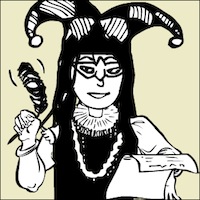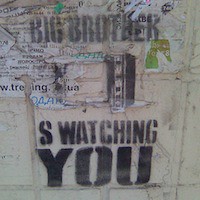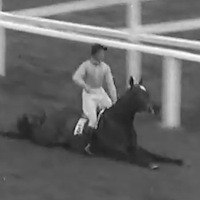Gunman Kills John Lennon

Imagine there’s no Mark David Chapman. The murder of John Lennon would not have occurred on December 8, 1980. The former Beatle would be 75, living in New York City with his beloved wife Yoko Ono. He might even still be making music.
With the San Bernardino and Colorado Springs shootings still fresh in mind at present, it’s sobering to remember that Chapman, who does indeed exist, shot to death one of the world’s best-loved musicians right in front of his home. It’s John who’s no longer here.
Like the San Bernardino shooters, Chapman had spent months planning the murder and obtained his weapon legally. He even showed the gun and bullets to his wife, telling her what he planned to do. She did not report this to the police. Gloria knew her husband had a history of depression, but clearly she never imagined he would go through with homicide. When he first flew to New York, she managed to convince him to return, but the second time – he said in a 2014 CNN article – he told her he was there to write a children’s book, and she believed him.
The night before the murder, on the phone from their home in Hawaii, Gloria urged her husband to “work on his problems one by one” by “getting back with Christ again,” according to Secular Web. He had been born again at age 16 and started to hate his musical idol for making notorious remarks that seemed anti-religious. Lennon’s best-known song, after all, begins: “Imagine there’s no heaven” – sacrilege.
According to Gloria, Chapman agreed to return to the Bible. However, it was not the only book involved in his deranged plot. He was obsessed with J.D. Salinger’s The Catcher in the Rye, childishly identifying with the protagonist’s sense of being “surrounded by phonies.” Chapman thought Lennon a phony for telling fans to “imagine no possessions, and there he was with millions of dollars and yachts and farms and country estates.” He was determined to save the world from the rock star’s lies.
 To make matters more incomprehensible, Chapman still idolized Lennon. He married his own Japanese-American wife around the same time that John married Yoko. As a security guard, he taped his hero’s name to his badge, and he then quit that job to be a househusband like Lennon. In fact, just six hours before the unhinged fan became a murderer, he actually asked his idol to sign his copy of the brand-new Double Fantasy album. A snapshot of this mind-boggling moment was taken by photographer Paul Goresh.
To make matters more incomprehensible, Chapman still idolized Lennon. He married his own Japanese-American wife around the same time that John married Yoko. As a security guard, he taped his hero’s name to his badge, and he then quit that job to be a househusband like Lennon. In fact, just six hours before the unhinged fan became a murderer, he actually asked his idol to sign his copy of the brand-new Double Fantasy album. A snapshot of this mind-boggling moment was taken by photographer Paul Goresh.
Twelve years later, Chapman recounted on “Larry King Live” that it was Goresh who urged him to get the autograph, since he had come all the way from Hawaii. He had mingled with fans and photographers outside the Dakota apartments all day and even shook hands with little Sean, his hero’s son. John and Yoko, whose album had just sold half a million copies, were in the middle of a busy day that had started with their Rolling Stone cover photo session with Annie Leibovitz. Yet Lennon was nice to him, Chapman recalled. After signing the album, he asked if Chapman wanted anything else.
Five shots
There was to be nothing else until 10:50 p.m., when John and Yoko came home. They passed Chapman as he stood in practically the same spot where they’d earlier met. He then turned and fired five shots, hitting Lennon in the back and the left shoulder, puncturing a lung and an artery. Lennon died in a police car on the way to the hospital. His murderer paced outside the Dakota, The Catcher in the Rye in his hands, until he was arrested.
In 1992, journalist Jack Jones told Larry King that Chapman had “wanted to hurt the world.” He had apparently fantasized about using nuclear devices to kill millions of people. Instead, he killed someone millions of people loved.
Ironically, his victim might have sympathized with his problems. In the last interview Lennon ever gave, recorded on the morning of his death, he told a crew from San Francisco’s RKO radio: “I’m not sayin’ that anybody who’s become a born-again Christian [is insecure] but, in general, to me it looks like a sign of insecurity because I recognize it in meself.”
Chapman was convicted of murder and sentenced to prison from 20 years to life. His eighth parole hearing was reported in the 2014 CNN article. He said he had chosen “the wrong way to glory,” and yet he also seemed boastful about how “very well thought out” his crime was. Thus, to date, the parole board has kept him in prison.
What, then, is gained from remembering his senseless crime? What lessons can possibly be learned, especially if, as Politico magazine claimed recently, the U.S. President has “stopped pushing for any real legislation” on gun control? There is little to deter the Chapmans of the world from killing innocents. Peace and love, in which the idealistic Lennon had undying hope, remain fragile in our society.
Perhaps, as John did, we can only keep believing. Perhaps December 8 is a day to commemorate not his violent death, but words from his final interview, which you can listen to on YouTube. Speaking about another of his songs, he said: “The people have the power – I don’t mean power of the gun. They have the power to make and create the society they want.”
Imagine that.
(Photo taken by Paul Goresh on December 8, 1980. Photo copyright © 1980, 1981 Paul Goresh. Image linked from Wikipedia for informational purposes only.)
With the San Bernardino and Colorado Springs shootings still fresh in mind at present, it’s sobering to remember that Chapman, who does indeed exist, shot to death one of the world’s best-loved musicians right in front of his home. It’s John who’s no longer here.
Like the San Bernardino shooters, Chapman had spent months planning the murder and obtained his weapon legally. He even showed the gun and bullets to his wife, telling her what he planned to do. She did not report this to the police. Gloria knew her husband had a history of depression, but clearly she never imagined he would go through with homicide. When he first flew to New York, she managed to convince him to return, but the second time – he said in a 2014 CNN article – he told her he was there to write a children’s book, and she believed him.
The night before the murder, on the phone from their home in Hawaii, Gloria urged her husband to “work on his problems one by one” by “getting back with Christ again,” according to Secular Web. He had been born again at age 16 and started to hate his musical idol for making notorious remarks that seemed anti-religious. Lennon’s best-known song, after all, begins: “Imagine there’s no heaven” – sacrilege.
According to Gloria, Chapman agreed to return to the Bible. However, it was not the only book involved in his deranged plot. He was obsessed with J.D. Salinger’s The Catcher in the Rye, childishly identifying with the protagonist’s sense of being “surrounded by phonies.” Chapman thought Lennon a phony for telling fans to “imagine no possessions, and there he was with millions of dollars and yachts and farms and country estates.” He was determined to save the world from the rock star’s lies.
 To make matters more incomprehensible, Chapman still idolized Lennon. He married his own Japanese-American wife around the same time that John married Yoko. As a security guard, he taped his hero’s name to his badge, and he then quit that job to be a househusband like Lennon. In fact, just six hours before the unhinged fan became a murderer, he actually asked his idol to sign his copy of the brand-new Double Fantasy album. A snapshot of this mind-boggling moment was taken by photographer Paul Goresh.
To make matters more incomprehensible, Chapman still idolized Lennon. He married his own Japanese-American wife around the same time that John married Yoko. As a security guard, he taped his hero’s name to his badge, and he then quit that job to be a househusband like Lennon. In fact, just six hours before the unhinged fan became a murderer, he actually asked his idol to sign his copy of the brand-new Double Fantasy album. A snapshot of this mind-boggling moment was taken by photographer Paul Goresh.Twelve years later, Chapman recounted on “Larry King Live” that it was Goresh who urged him to get the autograph, since he had come all the way from Hawaii. He had mingled with fans and photographers outside the Dakota apartments all day and even shook hands with little Sean, his hero’s son. John and Yoko, whose album had just sold half a million copies, were in the middle of a busy day that had started with their Rolling Stone cover photo session with Annie Leibovitz. Yet Lennon was nice to him, Chapman recalled. After signing the album, he asked if Chapman wanted anything else.
Five shots
There was to be nothing else until 10:50 p.m., when John and Yoko came home. They passed Chapman as he stood in practically the same spot where they’d earlier met. He then turned and fired five shots, hitting Lennon in the back and the left shoulder, puncturing a lung and an artery. Lennon died in a police car on the way to the hospital. His murderer paced outside the Dakota, The Catcher in the Rye in his hands, until he was arrested.
In 1992, journalist Jack Jones told Larry King that Chapman had “wanted to hurt the world.” He had apparently fantasized about using nuclear devices to kill millions of people. Instead, he killed someone millions of people loved.
Ironically, his victim might have sympathized with his problems. In the last interview Lennon ever gave, recorded on the morning of his death, he told a crew from San Francisco’s RKO radio: “I’m not sayin’ that anybody who’s become a born-again Christian [is insecure] but, in general, to me it looks like a sign of insecurity because I recognize it in meself.”
Chapman was convicted of murder and sentenced to prison from 20 years to life. His eighth parole hearing was reported in the 2014 CNN article. He said he had chosen “the wrong way to glory,” and yet he also seemed boastful about how “very well thought out” his crime was. Thus, to date, the parole board has kept him in prison.
What, then, is gained from remembering his senseless crime? What lessons can possibly be learned, especially if, as Politico magazine claimed recently, the U.S. President has “stopped pushing for any real legislation” on gun control? There is little to deter the Chapmans of the world from killing innocents. Peace and love, in which the idealistic Lennon had undying hope, remain fragile in our society.
Perhaps, as John did, we can only keep believing. Perhaps December 8 is a day to commemorate not his violent death, but words from his final interview, which you can listen to on YouTube. Speaking about another of his songs, he said: “The people have the power – I don’t mean power of the gun. They have the power to make and create the society they want.”
Imagine that.
(Photo taken by Paul Goresh on December 8, 1980. Photo copyright © 1980, 1981 Paul Goresh. Image linked from Wikipedia for informational purposes only.)
You Should Also Read:
John Lennon Quotations
Michael Jackson releases Thriller of a video
Für Elise - A Classical Music Mystery

Related Articles
Editor's Picks Articles
Top Ten Articles
Previous Features
Site Map
Content copyright © 2023 by Lane Graciano. All rights reserved.
This content was written by Lane Graciano. If you wish to use this content in any manner, you need written permission. Contact Lane Graciano for details.







